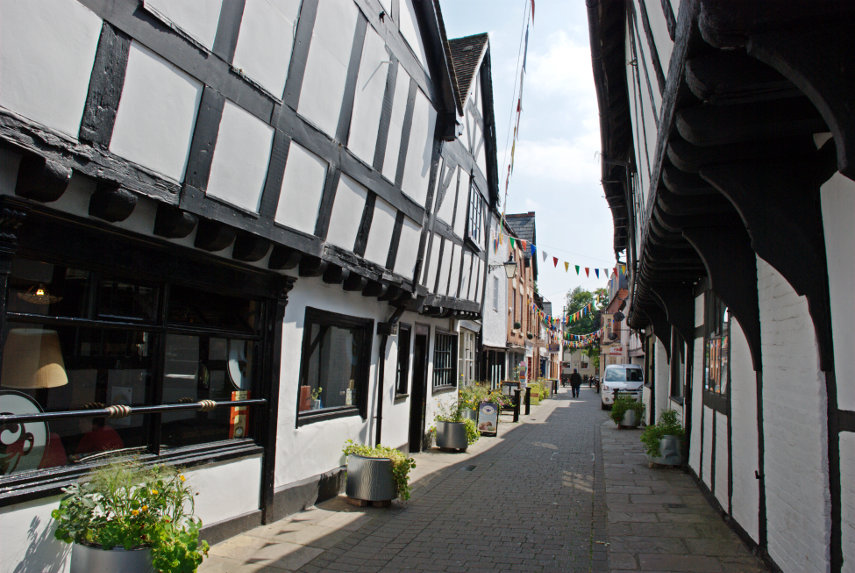
 DoneThat
DoneThat
The Black and White Villages, Herefordshire, England

In the north-west of Herefordshire between Leominster and Kington is an area of beautiful countryside characterised by the large number of timber-framed buildings. The Black and White Trail was developed to enable visitors to visit these places in an ordered, and thus convenient, way. These black and white buildings date from medieval times and later periods.
The market town of Leominster, although not a village, is suggested as a base from which to explore these villages.
| Comment |  |
 |
More of Leominster |

The name possibly derives from 'Wibba's Ley', a ley being a woodland glade and Wibba being a local Saxon landowner. In the Domesday Book the village name was transcribed as Wibelai. It is still pronounced as "Web-ley" (the spelling being similar to nearby Leominster which also does not pronounce the letter 'o' in its name).
| Comment | More of Weobley |

Eardisland has a 17th-century dovecote,two public houses, tea rooms and a restored AA box which is the oldest in England together with a multitude of black and white timber-framed buildings.
| Comment | More of Eardisland |

Occupied since before Magna Carta there are medieval buildings in every street in Pembridge including West Street shown here.
The name Pembridge comes from the old British 'Penn', meaning headland or enclosures, and the old English 'brycg', a bridge or causeway.
| Comment | More of Pembridge |